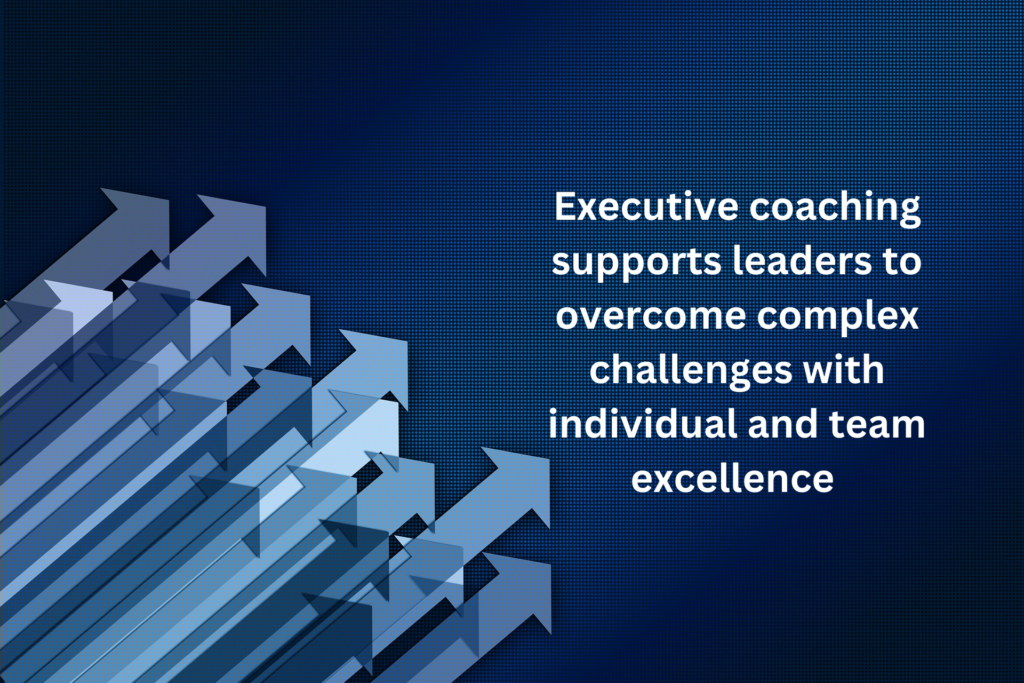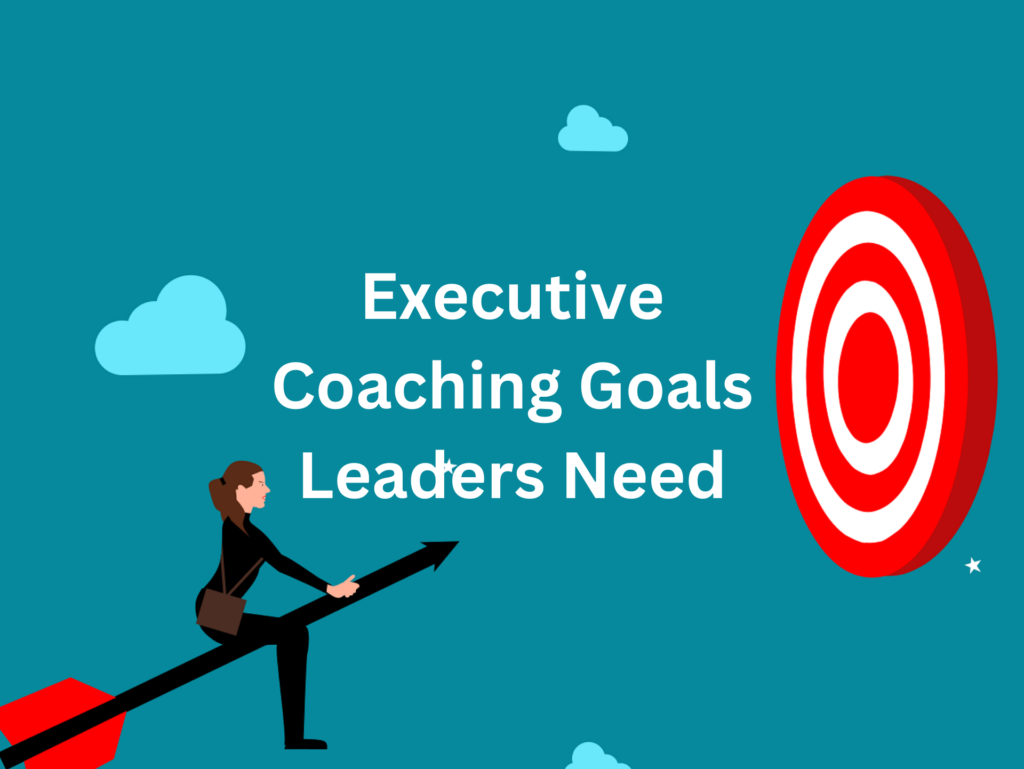Today’s leaders face complex challenges that demand both individual and team excellence. To thrive, they must develop their capabilities and guide their teams effectively. Executive coaching has become a crucial tool for enabling results, offering targeted support and equipping them with the tools and insights for delivering the desired outcomes. Here are 5 key executive coaching goals to help leaders unleash their potential.
(by Aaron Ngui)
Empowerment: Unleashing Inner Potential
A vital but often overlooked element of effective leadership is self-awareness. Coaches empower the leaders they work with by enabling them to better understand themselves. They use powerful questions and active listening to encourage reflection, so that people may pinpoint their passion, strengths, values, and leadership styles. This provides a solid foundation for building confidence and renewing their sense of purpose.
Also, the coaching conversations can also focus on identifying the strengths leaders may leverage on to sustain success. Conversely, work may be done to discover areas for improvement that may become obstacles. This allows for targeted capability development, including enhancing communication skills, creative thinking, stakeholder management, or decision-making.
An example is senior director Olive who felt stuck in her role at a FMCG giant. Through executive coaching, she explored her strengths, weaknesses, and motivations. Eventually she uncovered a latent passion for growing her team. This clarity redefined her leadership style, transforming her from a taskmaster to a visionary coach.
Life isn’t about finding yourself. Life is about creating yourself. – George Bernard Shaw, theatre playwright and critic
Alignment: Bridging Personal Goals with Organizational Vision
Sometimes, leaders feel lost in the hierarchy, losing sight of the bigger vision for organizational success. That is where executive coaching comes in to address the issue: aligning their personal ambitions with the organization’s priorities.
Coaches do this by exploring the leaders’ passion, interests, values, motivations, and career goals. Meanwhile, they also discuss the strategic opportunities for one to contribute to based on their strengths. By juxtaposing how personal ambitions may be synced to the whole business’ vision, leaders are enabled to take the necessary steps and actions to drive work and life goals.
Putting these steps into action involves setting clear objectives, crafting action plans, and establishing measurable performance indicators (KPIs) that tie individual and team performance to organizational outcomes.
Example: Tom, who leads the customer service function, is tasked with improving productivity. By leveraging his strength in attention to detail, he can enhance customer satisfaction and retention rates, finding personal fulfilment while driving organizational success.
Consider newly promoted VP Raj of a global tech firm. Despite his technical expertise, he found it challenging to reconcile team’s efforts with the company’s strategic goals. His coach supported him to understand the bigger picture and adjust his leadership approach to drive collective success.
Raj leveraged on his experience in technology for a data driven approach. Using data collected from a survey, he developed Key Performance Indicators (KPIs) tailored to his team’s contributions. Further coaching conversations with his coach allowed Raj to refine these KPIs. Such benchmarks for tracking progress and ensuring accountability became the base to execute strategy effectively.
The task of leadership is to create an alignment of strengths in ways that make weaknesses irrelevant. – Peter Drucker, a pioneer of Modern Management Theory
Clarity: Breaking Down Complex Challenges
Ever felt that today’s fast-paced world is like moving in a fog? Especially when weighty decisions need to be made in a complex environment. Executive coaching is particularly relevant when confronted with challenges that requires leaders to have a clear mind. With an effective approach, coaches can aid people in managing their priorities and time effectively.
A simple but powerful technique is to get leaders to list out what they do in a day. Then, identify 20% of the activities which contribute to 80% of the value. By focusing on what is the most impactful, leaders can concentrate their energy on what truly drives growth and innovation. ITD Word CEO and World #1 Strategic Innovation Coach Dr Peter Chee has an excellent article on managing priorities for maximum results.
Example:
Maria, the CEO of a startup, was feeling overwhelmed by a product launch. There was just so much to do and so little time to do it, or so she felt. The turnaround came when her coach supported her to pinpoint the critical elements for success and delegate the rest to the team. Together, they pinned down solutions, evaluated alternatives, formed backup plans, and developed a strategic solution for execution. Came launch day, everything was in place and not a hair out of sight.
This executive coaching goal is about cutting through the noise to focus on what truly matters. Leaders who think clearly move faster for more decisive action. This is a critical advantage in a rapidly changing business environment. Those who vividly understand the goals, strategies, and challenges are in a good position to adapt to changing conditions for business results.
Clarity of mind means clarity of passion, too; this is why a great and clear mind loves ardently and sees distinctly what it loves. – Blaise Pascal, French mathematician and philosopher
Collaboration: Building High-Performing Teams
This is an executive coaching goal that is often overlooked. High performing teams are not the natural outcome of putting a bunch of people together and telling them to work it out. Rather, it requires robust teamwork. Successful leaders enable results by engaging the team in discovery, planning, achieving team-based objectives and drive high performance to achieve a common vision. With coaching, they are better equipped to cultivate environments were trust, respect, and open communication thrives – as well as to discover barriers to collaboration and implement strategies to overcome the roadblocks.
Example:
Priya headed the finance department of a non-governmental organization. She was struggling to get people working on the same page. With the help of a coach however, she gained insights into her team’s dynamics, understanding individual strengths, weaknesses, and communication styles. By leveraging on this knowledge, she created a collaborative culture where every team member felt valued and empowered.
With the coach’s continued support, Priya also tapped on the collective strengths of her team. By identifying who was good at what, she could delegate tasks strategically. This ensures each member could contribute their best work based on their strengths, drove productivity, and boosted morale for sustained team excellence.
Alone we can do so little; together we can do so much. – Hellen Keller, disability rights advocate and author
Results: Driving Sustainable Success
Achieving results requires more than ambition. Driving objectives to completion requires a proven framework that leaders can tap on to translate lofty goals into actionable steps. An effective goal-setting approach is the SMARTEST method. This stands for Specific, Measurable, Achievable, Relevant, Time-bound, Engaging, Satisfying, and Team-based. Using this technique can help leaders to outline a clear roadmap for success.
Example:
Basil, an executive coach, would often introduce this framework to the people he coached. Although most would be familiar with the SMART technique, having the additional elements of the goal being engaging, satisfying, and team-based proved crucial to maintain momentum and fostering collaboration among teams and across functions. This holistic approach ensured well-defined goals and drove collective ownership and long-term commitment. For marketing senior director John, the SMARTEST framework proved useful for him to in keeping his team aligned with organizational objectives.
When leaders are coached for results, coaches work with them to establish regular check-ins, track progress, and provide continuous feedback. This ensures that leaders stay focused and motivated, even when challenges arise, and maintain a clear focus on results.
I never dreamt of success. I worked for it. – Estee Lauder, founder of Estee Lauder Cosmetics
The Transformative Power of Executive Coaching
Executive coaching is not just about addressing weaknesses, it’s about unleashing potential and achieving greatness. Leaders like Olive, Priya, and Maria exemplify how coaching empower individuals to overcome challenges, align with organizational goals, gain clarity, foster collaboration, and achieve extraordinary results.
For leaders striving to excel in today’s dynamic world, these five executive coaching goals serve as a blueprint for success. Leaders elevate performance, inspire teams, and drive meaningful transformation when they embrace the transformative power of executive coaching. For more on how executive coaching drives results, book a complimentary consultation with us and we’ll talk soon!
If you want to lift yourself up, life up someone else. – Booker T. Washington, founder of the Tuskegee Institute

Other resources you might be interested in:
- Executive Leadership: A Guide to Developing Tomorrow’s Titans
- 8 Effective Coaching Skills for Leaders & Managers
- 43 Leadership Coaching Quotes to Empower Success
- One-on-one Coaching: The Art of the Breakthrough
- Team Coaching: Guidelines for High Performance

